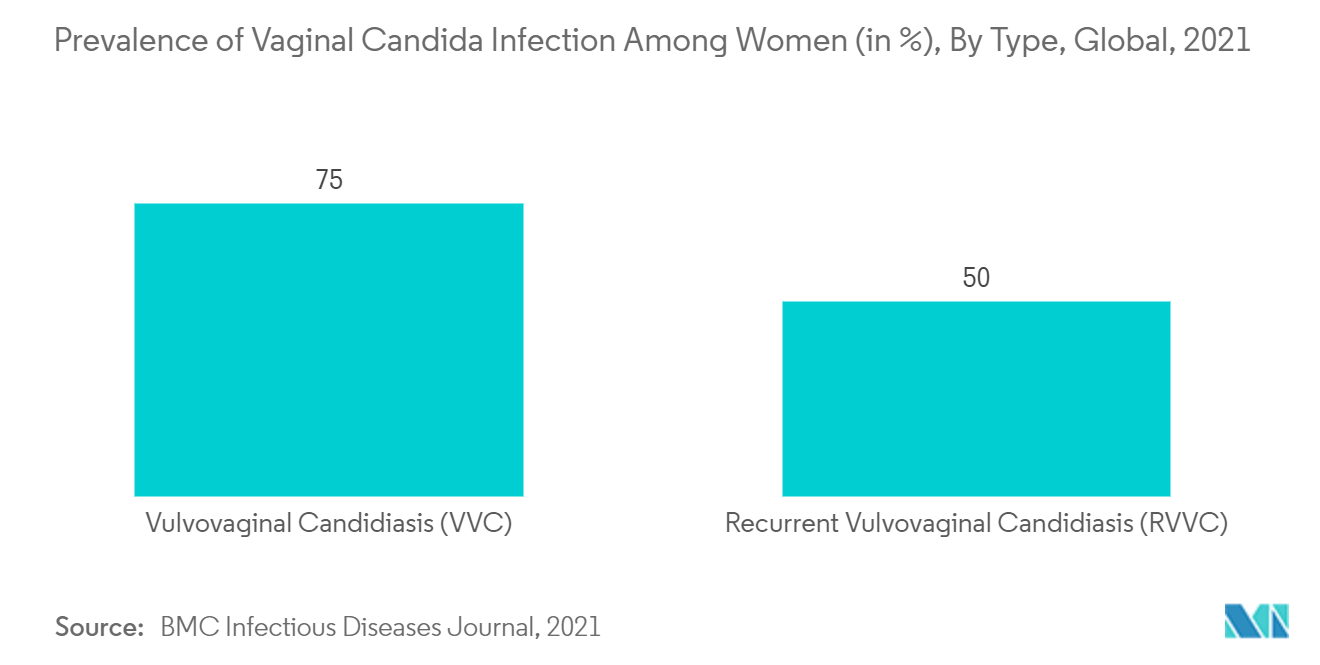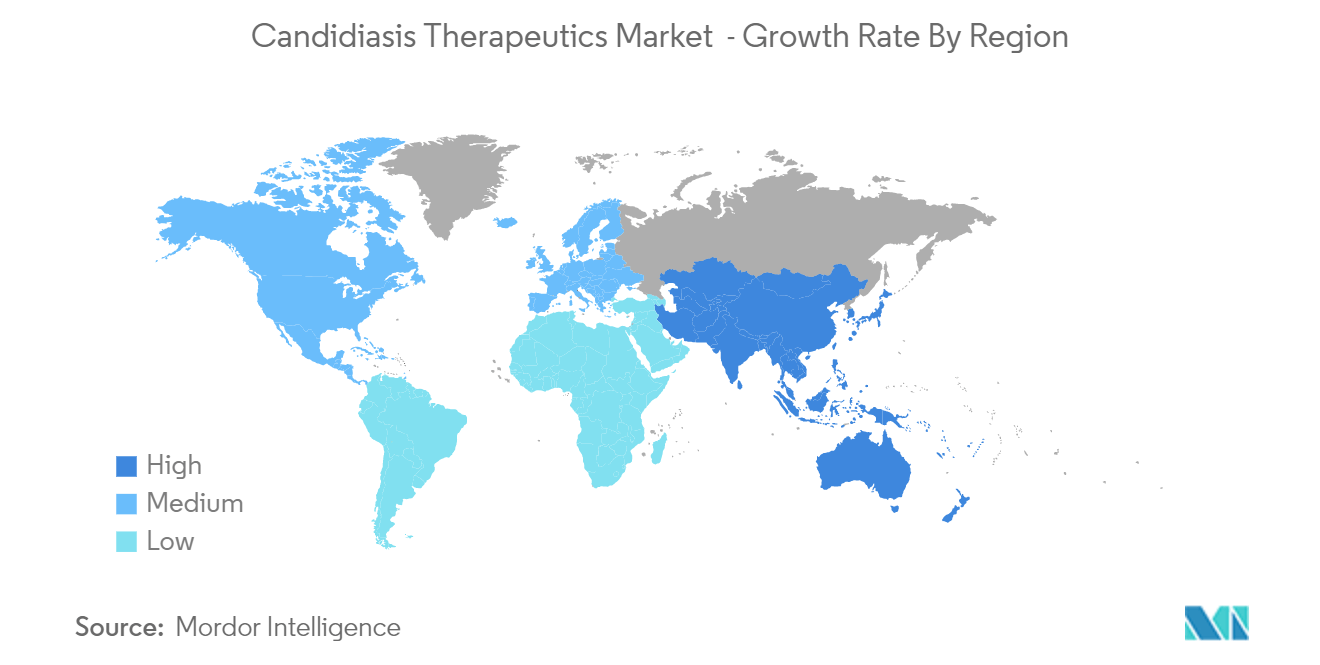Market Trends of Candidiasis Therapeutics Industry
This section covers the major market trends shaping the Candidiasis Therapeutics Market according to our research experts:
Vulvovaginal Candidiasis Segment is Expected to Hold a Significant Share in the Market
Vulvovaginal candidiasis (VVC) is a vaginal fungal infection confirmed to be caused by Candida species. In most cases, it is caused by Candida albicans. The VVC can be caused by other Candida species or yeasts occasionally. VVC is also called recurrent vulvovaginal candidiasis (RVVC) because it is a relapsing vaginal fungal infection. The high prevalence of infection among the population is driving the segment growth; thus, the vulvovaginal candidiasis segment is predicted to see growth in the future.
Increasing research to find the prevalence of the VVC or RVVC is also expected to boost segment growth. According to a research article published by PubMed in August 2021, the prevalence of recurrent vulvovaginal candidiasis (RVVC) varies owing to the age of the population. It can be as high as 9%. Due to the lack of treatment options in 57% of the cases, relapses occur within six months after fluconazole maintenance therapy, which is the most commonly used treatment among other options.
Furthermore, a research article published by PLOS One in April 2022 reported that vaginitis is a common complaint in the outpatient setting and candida species cause approximately 30% of vaginitis episodes, with an estimated 75% of women affected by vulvovaginal candidiasis (VVC) during their lifetimes. Thus, the high prevalence of the infection among the target population requires more attention and therapeutics for treatment. This drives the growth of the segment.
Additionally, the segment's research & development (R&D) is increasing. Major players are focusing on developing products for vaginal yeast infection, which, in turn, is predicted to drive segment growth. For instance, in February 2021, SCYNEXIS, Inc., a biotechnology company focused on developing therapies and drugs for fungal infections, partnered with Amplity Health, one of the global leaders in contract commercialization organization, to launch Brexafemme (ibrexafungerp) in the United States. Brexafemme is the expected trade name for ibrexafungerp, an oral antifungal product candidate for the treatment of vulvovaginal candidiasis (VVC), also known as a vaginal yeast infection. In April 2022, Mycovia Pharmaceutical's new product, VIVJOA (oteseconazole), received FDA approval and became the only FDA-approved medication for recurrent vulvovaginal candidiasis (RVVC) or chronic yeast infection. Thus, the increasing R&D in the segment is anticipated to drive segment growth.
Therefore, such factors mentioned above are anticipated to drive the segment growth, which is expected to propel the overall market growth over the forecast period.

North America is Expected to Hold a Significant Market Share Over the Forecast Period
North America is expected to hold a significant market share owing to the increasing target population in the countries across the region.
Increasing research and product development in the United States is expected to boost market growth in the region. For instance, according to an article published by PubMed in April 2022, a research study aimed to calculate rates and evaluate diagnosis and treatment practices of vulvovaginal candidiasis (VVC) and recurrent vulvovaginal candidiasis (RVVC) in the United States was conducted. The study was conducted using IBM MarketScan, including health insurance claims data on outpatient visits and prescriptions for 28 million people. The study results showed that among 12.3 million female patients in the IBM MarketScan database, 149,934 had a diagnosis code for VVC. Among those, 3.4% had RVVC. The VVC rate was highest in the South census region (14.3 per 1,000 female patients). Thus, the prevalence of vaginal candidiasis generates demand for new therapeutics in the country, driving market growth.
Additionally, research & development activities regarding candidiasis in Canada is also enhancing the segment growth. For instance, according to clinicaltrials.gov, in June 2021, a phase 1 study was started by the University of Manitoba, Canada, to check the efficacy of fluconazole and boric acid in vulvovaginal candidiasis patients.
In addition, the major players are engaged in innovation and product development in the country, which is garnering the market studied growth in the country. For instance, in November 2021, Profounda, Inc., a United States Bases company, received the FDA's Orphan Drug Designation approval for using miltefosine to treat Invasive candidiasis with Miltefosine. Thus, the recent developments in the United States are predicted to drive the overall growth of the market studied in the region.
Therefore, owing to the previously mentioned factors, the growth of the studied market is expected in the North American region.


